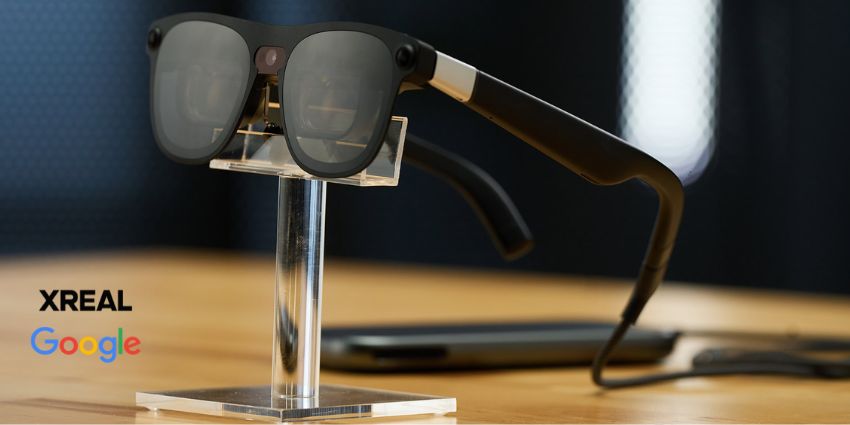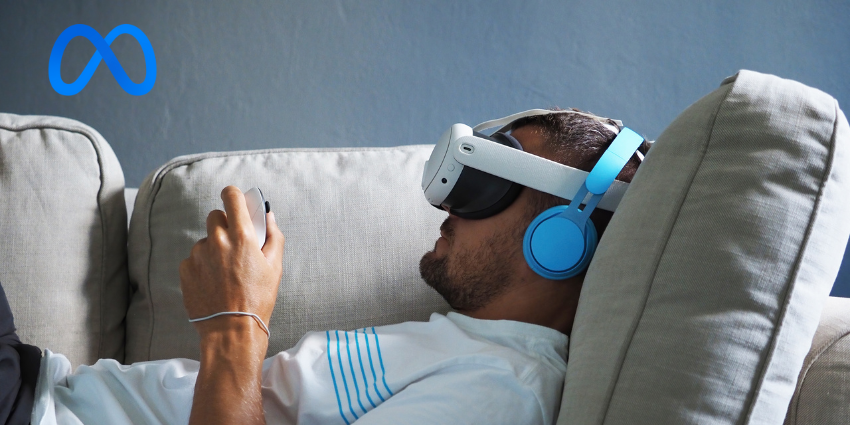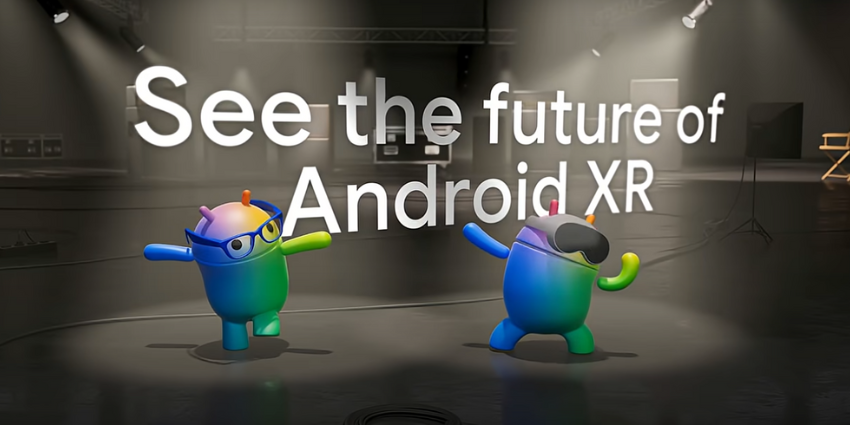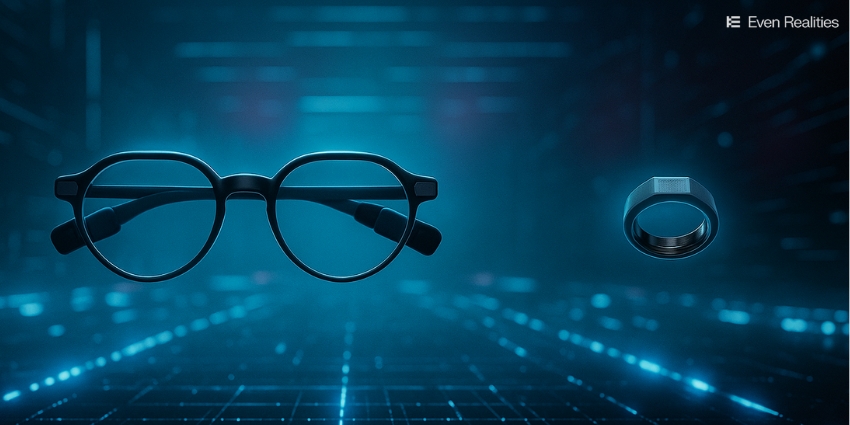That was a wrap. Another year, another Meta Connect. Zuckerberg’s firm had to hit big this year. Apple debuted the Vision Pro earlier in the year and stole the line light during the first half of 2024.
However, with Meta Connect and its announcements, namely Orion, it seems that Meta is looking to grab the second half of 2024 by showcasing highly innovative wearable XR technology.
Meta’s upcoming AR smart glasses are not near consumers hands yet, it may still take many years to come to life in an accessible manner.
However, Meta is putting its steaks in the ground with an EMG-ready device that aims to streamline AR products and discover suitable use cases to support them.
Alongside big Meta Connect announcements, the broader market is going strong. Snap is looking to take the AR cake this week with its own smart glasses announcement, while enterprise XR use cases grow in the US and beyond.
The second half of the decade is approaching, as technology leaders like Zuckerberg and others are looking to place themselves on Forbes’ most wealthy list by discovering the technology that will be the next smartphone and find a home in everyone’s pockets.
Meta Connect Hits Big
At Connect 2024, Mark Zuckerberg, CEO and Founder of Meta announced the upcoming release of the Quest 3S, which had been the subject of rumours for months. This new product is a mixed reality (MR) device similar to the Quest 3 but more affordable.
Meta has revealed that pre-orders for the Quest 3S will start at $299.99 for a 128GB model and $399.99 for a 256GB model. Notably, Meta emphasized the Quest 3S’s ability to support workplace productivity applications, such as a virtual desktop.
The Meta Quest 3S will boast features such as a high-quality 4K display, a Fresnel lens system, and a full-color passthrough. Additionally, the headset will come with specifications including a Qualcomm Snapdragon XR Gen 2 chipset, 8GB of RAM, hard-tracking, and Touch Plus controllers.
During the event, Mark Zuckerberg also unveiled a prototype for the highly anticipated Orion device, a pair of AR smart glasses. He described the device as “the most advanced glasses in the world and our first prototype of full holographic AR.”
Zuckerberg also announced a significant breakthrough: neural interface interaction. Orion will allow users to interact with the smart glasses using their brain’s electrical activity via a wrist device. Following the reveal, CTO Andrew Bosworth gave an interview explaining Orion’s journey. He stated:
We just revealed Orion, our AR glass prototype. Building full AR glasses like these with a wide field of view display, wireless AI built-in, running all the core experiences you’d expect, has been something we’ve been working on for nearly a decade now. When we first started this project, teams crunched the numbers, and they thought our chances of building one of these were 10%. So we overcame a lot of odds to build these glasses.
Speaking on the breakthrough neural interface of Orion, Bosworth added, “We needed a way to interact with these devices as well, something you can do while you’re on the go and heads up. This is where EMG and gaze come in. The wristband detects neuromotor signals so you can click with small hand gestures while your hand is resting at your side and you can select an action just by looking at it, these are more natural, faster more comfortable and unobtrusive interactions.”
In an interview earlier in the year, Zuckerberg explained, “When people hear neural interface, the first instinct is it must wire into your brain. But I think most people are not going to want something wired with their brain. But your brain sends signals to your body through your nervous system. – So you can have a wristband that gets trained to pick up different signals and pathways of your brain communicating to move your hand.”
Meta recently revealed advancements in its Ray-Ban Meta AR-lite smart glasses, which are available for trial. The updates include new AI integrations, translation capabilities, and remote assistant integrations.
Earlier this year, Zuckerberg confirmed the success of the Ray-Ban Meta smart glasses and hinted at plans to increase production. He stated, “The demand for the Ray-Ban Meta product has been much higher than we expected. While it’s great to see, it’s also disappointing that we haven’t made enough of them, and they’re sold out in most styles.”
In addition to Meta’s Quest 3S, Ray Ban Stories, and Orion announcements, the company also recently launched the Meta for Developers marketing hub and revamped developer centers for its XR portfolio.
Meta is expanding its XR developer support in time for Connect’s major announcements. According to an official statement, Meta aims to create “a vast ecosystem of tools and tailored solutions.”
The developer centres will specifically support XR developers in creating Meta Horizon content for the Quest portfolio.
Meta recently updated the Horizon operating system to take a more open approach to content creation and distribution.
Furthermore, the new developer centres support developers in utilizing Meta’s social media portfolio and AI/LLM solutions.
Logitech Debut Meta Quest 3S Accessory for Virtual Productivity
Staying on Connect-related news, Logitech has officially launched its MX Ink product, a stylus accessory designed specifically for the Meta Quest headset lineup.
The MX Ink is compatible with the newly released Meta Quest 3S, which will be shipped on October 15th. This accessory allows users to annotate and interact within a 3D space. It is also compatible with Meta Quest 2 and 3. It is available in three different models: MX Ink ($129.99), MX Ink + MX Inkwell Combo ($169.99), and MX Mat ($49.99).
Vadim Kogan, Head of AR/VR at Logitech, said:
With the launch of MX Ink, we unlock a new wave of creativity and expression and continue to expand our MX ecosystem for advanced creators, following our announcement of the MX Creative Console. This tool offers a whole new way to integrate into MR experiences, bridging the gap between traditional tools and the immersive digital world.
The stylus enables users to navigate and annotate in MR environments, allowing for use cases such as virtual desktops. With the device, Meta Quest users can interact with digital assets such as papers, desks, and whiteboards. Logitech emphasizes hot professionals in sectors like medicine, architecture, and education can take advantage of compatible applications upon launch.
Transfr Boosts VR Learning Accessibility
This week, Transfr, a VR career training solution provider, announced the launch of 14 new Spanish-language VR programs. These programs have been introduced following the successful implementation in school districts such as New Jersey and Kannapolis.
The new VR learning simulations encompass a range of high-paying career paths, including solar technician, nursing, semiconductor manufacturing, and network technician. With the addition of Spanish language support, these career pathways are now accessible to a wider group of students.
Bharani Rajakumar, the Founder and CEO of Transfr, added:
More and more Americans need new pathways to upward mobility. This expansion of our VR career exploration catalog brings new opportunities to educators, learners and communities who have not previously had access to high-tech tools, training and support. Transfr will continue to lead the market with solutions to enable the workforce of the future to meet the huge demand for trained workers across emerging and growing industries.
Additionally, the Spainish-ready learning pathways come as districts like Kannapolis City Schools are experiencing a “significant growth in its Hispanic population, which now represents 41 per cent of the district,” according to Ashlyn Ozment, Career Development Coordinator at Kannapolis Middle School in North Carolina.
Ozment explained that by leveraging Transfr’s solution, “we can now empower our growing population of Spanish-speaking students to explore and prepare for in-demand careers that offer upward mobility. This is a crucial step in ensuring all of our students have the resources they need to succeed.”
Snap CEO Says Meta and Apple Will Follow its Lead in AR Smart Glasses
In a recent interview with CNBC, Evan Spiegel, CEO of Snap, explained that the Snap Spectacles AR smart glasses have reached their “5th generation.” The developer-only model is now ready for AR content creators to design new immersive experiences and applications. The goal is to launch smart glasses into the mainstream, a long-term objective shared by companies like Meta.
“I think we’re at a unique moment where both consumers and developers are really ready for something new,” said Spiegel, keen to highlight the developer opportunities in the Snap AR device.
The CEO also explained that the latest Spectacles iteration contains a new operating system “based on natural interaction.”
Spiegel added:
You just use your hands and your voice to interact with augmented reality. What’s so exciting about Spectacles is that it brings us closer to our vision for people using computing together, grounded in the real world with their friends. That’s something we’ve been working on for a long time now.
Spiegel noted that “we’re at a bit of a watershed moment,” which could lead to the much-awaited upward adoption curve that AR hardware vendors are waiting for.
The CEO of Snap also mentioned that “people are becoming increasingly tired of their screens and the way they affect them, and developers are feeling frustrated about creating for the smartphone platform.” This led Snap to develop smart glasses a few years ago, along with an AR drone which has since been discontinued.
Despite debates on which firm is the leader in the smart glasses race, Spiegel notes Snap’s passion for the technology.
Spiegel said:
The reason why we’re so convinced that AR glasses are the path forward is because people are getting tired of screens. We’ve worked really hard to try to innovate with screens to make them better, to make them more fun to use. But at the end of the day, they’re just screens, and people feel isolated by their screens. They feel like it takes them away from their friends and family. Glasses are a way to use computing that actually brings us together and keeps us connected with the real world.







